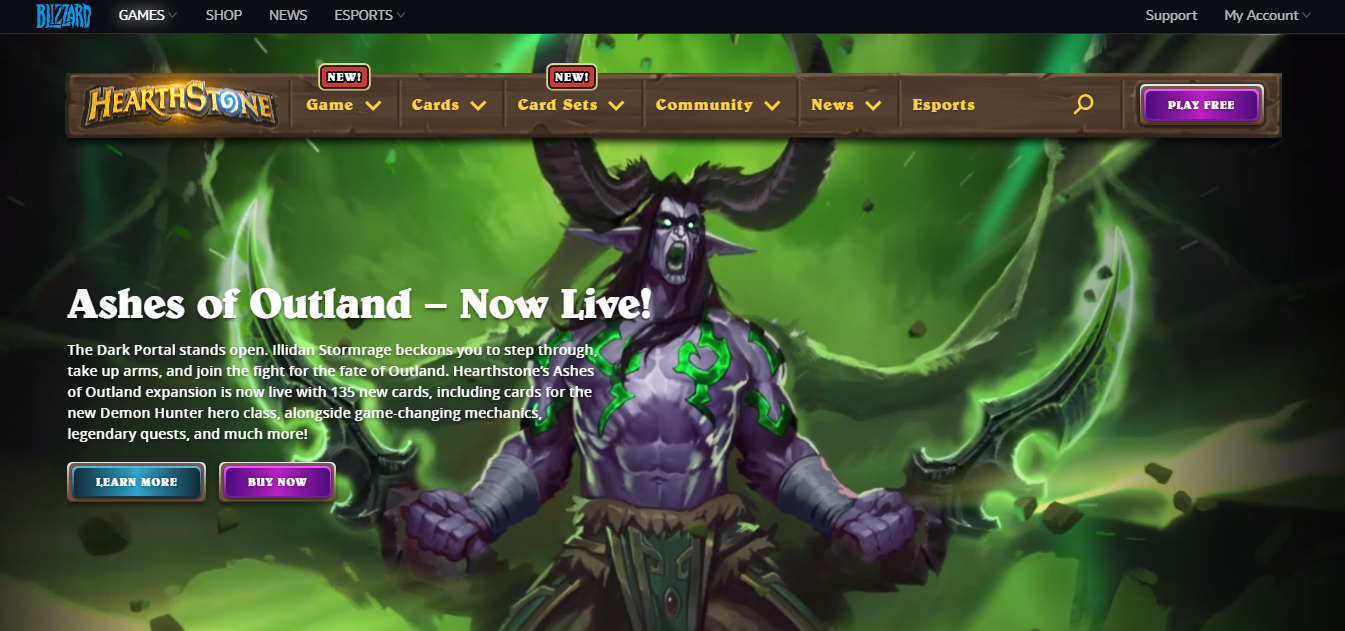

In a vacuum its a terrible idea to attack a 10/1 into a 1/1, but there are many contexts in which this attack is the only way to win the game. “Having a plan” and “playing to outs” require that you have the ability to make decisions based solely on the texture of the current game, regardless of how stupid these decisions might look in another one.

Decisions in Hearthstone, just like decisions in real life, depend entirely upon the context in which they are made. They adopt hard and fast rules such as “never Coin into Wild Growth” or “never play turn one Northshire Cleric against a Warrior”, but in Hearthstone there is no such thing as “never”. People who aim to rapidly improve at Hearthstone tend to adopt a heuristic-based approach to their decision making.
COMPETITIVE HEARTHSTONE SERIES
It's always better to have a plan than to not have one, so we should begin each turn by asking ourselves a series of questions to determine what the best plan is and what can we do right now to get there the fastest. Conversely, playing to your opponent’s outs is to ask and answer “how can I lose this game?” when you have the lead.īy having a plan we can make more informed decisions in the present by making choices which guide ourselves towards a desirable future state. To play to your own outs is to ask and answer “how can I win this game?” when playing from behind. "Having a plan" is a framework for making tough decisions in tight games, and to have a plan is to consider the past, present, and future of our current game when making decisions. “Playing to outs” is the framework for making decisions in games where one player is clearly ahead. If understanding your role in a matchup is what separate the beginners from the intermediate players, then “having a plan” and “playing to outs” are what separate the intermediate players from the advanced ones.

In part two we’ll be covering two highly related concepts: “having a plan” and “playing to outs”. Part two builds upon the ideas of its predecessor and is written under the assumption that the reader understands the terms I defined in it. If you don’t have a solid understanding of “who’s the beatdown?” then you should go back and read part one before part two, even if you’re already rank 15 or higher. Commonly referred to as “ who’s the beatdown?”, I can’t possibly overstate how critical it is to understand this concept before moving on to more complex topics. In part one I discussed the importance of identifying your role as the aggro or control player in every game of Hearthstone. I can’t promise to help you find the time and motivation it will take to play the 300 or more games it takes to reach Legend, but I can certainly help you learn the fundamentals.

I’m of the opinion that anyone can reach Legend so long as they have a solid grasp on the fundamentals and are willing to commit the time and effort. Welcome to part two of “Legend in the Making”, my four-part series on all the skills you’ll need to reach Hearthstone’s highest rank. Ranks 15 to 10 - Having a Plan and Playing to Outs
COMPETITIVE HEARTHSTONE HOW TO
Now that we understand the importance of roles, it's time to learn how to construct a solid plan which will guide us through tough decisions.


 0 kommentar(er)
0 kommentar(er)
